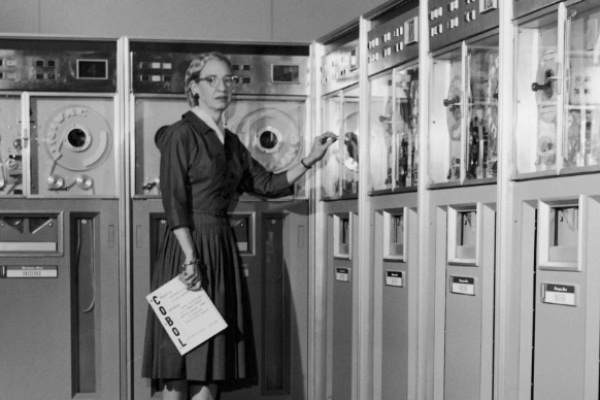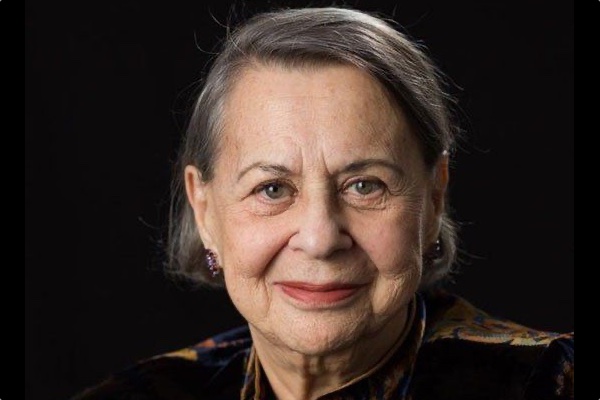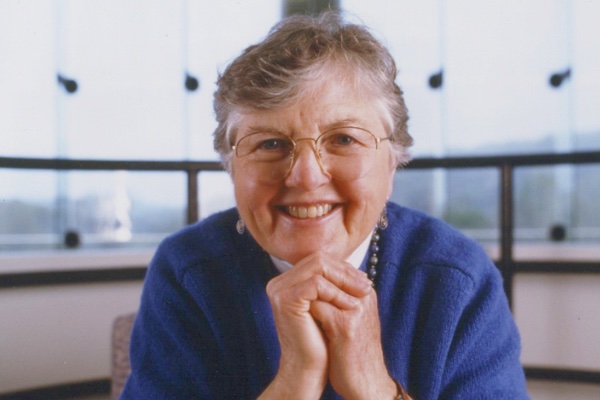ANTONIO LÓPEZ | Tungsteno
The context of the Second World War required the presence of some players who had until then been secondary to the war effort: women. The mothers of computing, such as Grace Hopper, Evelyn Berezin and Fran Allen or the so-called "Top Secret Rosies", shaped the path of computing with their pioneering contributions to programming.
From Amazing Grace to Top Secret Rosies
Grace Murray Hopper (1906-1992), considered the first modern programmer in history, had earned a PhD in mathematics from Yale University when the outbreak of the Second World War allowed her to join the US Navy at the age of 37, from where she was sent to Harvard to work on the development of the first electromechanical computer, the Mark I. After the war, Hopper continued to work on compilation, a field of computer science that allows programming languages to be "translated" into natural languages, a key step in the democratisation of computer science. To this end, Hopper created COBOL (Common Business Oriented Language), the most widely used high-level programming language of the 20th century, in which entire generations of programmers were trained. The woman who would go down in history as "Amazing Grace" received more than 40 honorary doctorates, a warship named after her (the USS Hopper) and the ironic title of "man of the year" in 1969.

To the pioneer Grace Hopper, Amazing Grace, we owe the most widely used high-level programming language of the 20th century, COBOL. Credit: Vassar Archives and Special Collections.
The war also led a group of women programmers to work for the US Army on a secret project: the first computer capable of calculating the trajectories of projectiles, the ENIAC (Electronic Numerical Integrator and Computer). Although it was engineers John Presper Eckert and John William Mauchly who introduced it to the world in 1946, it was the precision of the calculations of programmers Betty Snyder Holberton, Jean Jennings Bartik, Kathleen McNulty Mauchly Antonelli, Marlyn Wescoff Meltzer, Ruth Lichterman Teitelbaum and Frances Bilas Spence that would ultimately hasten the end of the war. These six women, students from the University of Pennsylvania, who had developed the programming foundations necessary for the operation of ENIAC, remained anonymous until 2010, when the documentary Top Secret Rosies: The Female ‘Computers’ of WWII put names to these mothers of the first electronic computers.

New Yorker Evelyn Bezerin is behind the concept of the text editor, but we also owe her the first computerized airline ticket reservation system. Credit: Computer History Museum.
Evelyn Berezin: from text editor to airline ticket booking
Outside of the military, women also pioneered the popularisation of computers in the business field. For instance, Evelyn Berezin (1925-2018) was responsible for the definitive transformation of the functions of the secretary thanks to a computer she called "the Data Secretary," a device with 13 semiconductor chips that could perform word processing functions. Although she began studying Economics because that was a preferred subject for women at the time, she was eventually able to attend New York University and study physics, where her interest lay. In 1968 she developed a program that allowed text to be stored and edited, a concept she marketed a year later through the Redactron Corporation, the company she founded.
Berezin would later go on to develop the first computerised air ticket reservation system for United Airlines, which instantly linked customers and seat availability with the offices of the airlines. According to the obituary published by the New York Times on the occasion of her death, Berezin was "an adventurous do-it-herself polymath with the logical mind of an engineer, the curiosity of an inventor and the entrepreneurial skills of a C.E.O."

Great promoter of the female presence in computing, Fran Allen was the first woman to win the Turing Award, equivalent to the Nobel Prize in Computer Science, in its forty-year history. Credit: IBM Research.
Fran Allen, the first female Turing
A major figure for computer science and for the role of women in the history of this field was Frances Elizabeth Allen, better known as "Fran” Allen (1932-2020). Like Hopper, she was also a pioneer in the optimisation of compilers and a strong promoter of the female presence in STEM fields (an acronym for the academic disciplines of science, technology, engineering and mathematics).
Allen spent 45 years of her career at IBM, where she became the first woman to become an IBM Fellow in 1989. From there she worked in the field of parallel computing, which divides tasks between several computer systems, a model without which it would not be possible to develop computer applications today. Fran Allen also worked for the American National Security Agency (NSA) and, in addition, within IBM she undertook a parallel project: the integration of women in computing. During the 1970s and 1980s, Allen managed to have half of the compilation experimentation team made up of women.
With a university education in mathematics, Fran Allen did finally get recognition for her work, as she was the first woman to win the Turing Award in its forty-year history. When in 2006 she received the award, equivalent to the Nobel Prize in Computer Science, for introducing "the abstractions, algorithms and implementations that laid the groundwork for automatic program optimisation technology," Allen made a wish for the women computer scientists of the past and the future, that their contributions would be more and more recognised.
· — —
Tungsteno is a journalism laboratory to scan the essence of innovation. Devised by Materia Publicaciones Científicas for Sacyr’s blog.